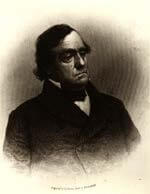About Cass County
Cass County was approved by the Territorial Legislature on March 7, 1855, and was named in honor of General Lewis Cass. Bounded on the North by the Platte River and on the East by the Missouri River, the county measures approximately 34 miles East to West and 20 miles North to South and has a population of over 25,000.
Our County Seat is located in the city of Plattsmouth. The Courthouse Complex is located on the northeast end of Main Street. County Courthouse Complex consists of the Courthouse, Law Enforcement Center and Jail, and the Annex Building.
Cass County is one of the earliest settled counties in the state of Nebraska. It was named in honor of General Lewis Cass of Michigan (1782-1866), an American statesman and patriot who took an active part in the fight over the Kansas-Nebraska bill. Cass was the Democratic nominee for President in 1848.
The story of the county begins June 2, 1739, when Pierre and Paul Mallet reached the mouth of a river they called the "Platte" and followed the river upstream for 70 miles. This became the first expedition by white men on Nebraska soil.
Numerous towns were incorporated during the early days of settlement, many have since become "ghost towns" but today Cass County is still one of the largest counties in the state and is comprised of fifteen towns.
ALVO: Established in 1888 as a stop on the Rock Island route and named after the stationmaster's daughter.
AVOCA: Incorporated in 1857. The name is probably derived from Thomas Moore's poem "Sweet Vale of Avoca", extolling a river in Ireland.
CEDAR CREEK: Platted in 1854 and named for a nearby creek with cedar trees growing along its bank.
EAGLE: Established in 1869 and originally named "Sunlight". The name was changed to Eagle in 1887 after an eagle was shot in the area.
ELMWOOD: Founded in 1868 and named by David McCaig, first postmaster, for a grove of elm trees. The first townsite was located on Stove Creek approximately 2 ½ miles northeast of the present site.
GREENWOOD: Established in 1869 and named after Silas Greenwood, a trapper and hunter who was the first resident of the town.
LOUISVILLE: Platted in 1857. Some sources say the town was named for Louisville, Kentucky; others say it was named for a Mr. Lois who operated a grist mill.
MANLEY: Established in 1883 and originally named "Summit". There is a controversy over the name "Manley": three different ranchmen who lived in the vicinity called it "Manley" and each thought the town was named after him.
MURDOCK: Established in 1890 and named in honor of a Mr. Murdock, a member of the town site company for the Chicago, Rock Island and Pacific Railroad.
MURRAY: Established in 1884 as "Fairview". The name was later changed to honor the Reverend George L. Murray, Pastor of the United Presbyterian Church.
NEHAWKA: Settled in 1855 by Samuel Kirkpatrick where he built a sawmill on Weeping Water Creek. The town was named by Isaac Pollard who, while on a trip to Washington, D.C., thumbed through a book of Indian names and chose the name "Nehawka".
PLATTSMOUTH: Established as a ferrying point of the Missouri River in 1852 by Samuel Martin. The name comes from its location at the confluence of the Platte and Missouri Rivers.
SOUTH BEND: Established in 1856 and named for its geographical location on the south bend of the Platte River.
UNION: Settlement began in 1857 and the town was platted in 1887. The name reflected the favoring of the Union during the Civil War.
WEEPING WATER: Established in 1857 and named for the creek called by the French "L'eau qui Pleure" or "the Water that Weeps".



